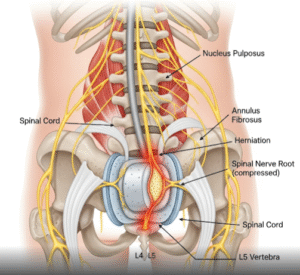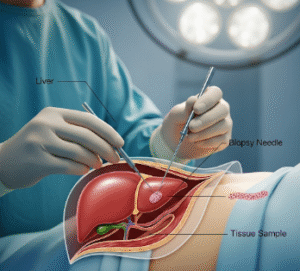Overview
Birth injuries refer to physical harm or trauma sustained by a newborn during labor and delivery. These injuries can range from minor bruising or swelling to severe complications affecting bones, nerves, or internal organs. While advances in obstetric care have significantly reduced the incidence of birth injuries, they remain a concern, particularly in complicated deliveries or in cases involving large infants, prolonged labor, or medical interventions.
In Korea, hospitals and birthing centers prioritize safe delivery practices, prenatal monitoring, and postnatal care to prevent and manage birth injuries. Neonatal intensive care units (NICUs) and multidisciplinary pediatric teams provide specialized treatment for affected infants.
What are Birth Injuries?
Birth injuries encompass any physical trauma sustained by an infant during the birthing process. They may occur due to mechanical stress during vaginal delivery, medical interventions such as forceps or vacuum extraction, or complications during cesarean section.
Common types of birth injuries include:
- Soft tissue injuries: Bruises, swelling, or skin lacerations
- Skeletal injuries: Fractures of the clavicle, humerus, or femur
- Nerve injuries: Brachial plexus injuries, facial nerve palsy
- Internal injuries: Bleeding in the brain (intracranial hemorrhage) or other organs
- Hypoxic injuries: Due to oxygen deprivation during labor or delivery
Symptoms
Symptoms vary depending on the type and severity of the birth injury:
- Visible signs: Bruising, swelling, or skin abrasions
- Movement difficulties: Limited arm or leg movement, weakness, or abnormal posture
- Nerve injury indicators: Drooping face, weak grasp, or asymmetrical reflexes
- Pain or irritability: Excessive crying or discomfort
- Breathing difficulties: Rapid or irregular breathing in severe internal injuries
- Neurological symptoms: Seizures, lethargy, or poor feeding in cases of hypoxic brain injury
Early recognition and prompt medical evaluation are crucial to prevent long-term complications.
Causes
Birth injuries may result from a variety of factors:
- Complicated labor: Prolonged or obstructed labor increases the risk of trauma
- Large infant size (macrosomia): Increases the likelihood of shoulder dystocia or fractures
- Premature or low-birth-weight infants: More susceptible to physical trauma
- Medical interventions: Use of forceps, vacuum extraction, or cesarean section complications
- Maternal health factors: Diabetes, obesity, or pelvic abnormalities
- Multiple births: Twins or triplets increase delivery complexity and risk
Risk Factors
- Maternal age (very young or older mothers)
- First-time pregnancies
- Fetal malposition (breech, transverse)
- Preterm birth or low birth weight
- History of complicated deliveries in previous pregnancies
- Use of induction agents or epidural anesthesia, which may influence labor progression
Complications
While many birth injuries are minor and heal without intervention, severe cases may result in:
- Permanent nerve damage: Such as Erb’s palsy from brachial plexus injury
- Fractures that require surgery or prolonged immobilization
- Brain injury: Cognitive or motor deficits due to hypoxic-ischemic events
- Developmental delays: Physical or neurological
- Respiratory complications from chest trauma
- Long-term disability: In severe cases, affecting mobility or daily function
Prevention
Prevention strategies focus on safe labor and delivery practices:
- Prenatal care: Regular monitoring of fetal growth, position, and maternal health
- Maternal education: Awareness of risk factors and signs of labor complications
- Skilled obstetric care: Trained professionals in hospitals or birthing centers
- Use of safe delivery techniques: Proper management of shoulder dystocia and assisted deliveries
- Monitoring fetal well-being: Through fetal heart rate monitoring and timely interventions
Treatment Options in Korea
Diagnosis
In Korea, birth injuries are diagnosed promptly using:
- Physical examination immediately after birth to assess visible injuries
- Imaging studies: X-rays for fractures, ultrasound for internal injuries, MRI or CT for neurological assessment
- Neurological evaluation: Electromyography for nerve injuries
- Laboratory tests: To assess blood loss, oxygenation, or organ function
Medical Management
- Minor injuries: Observation, pain management, and supportive care
- Fractures: Immobilization, splints, or surgical correction in severe cases
- Nerve injuries: Physical and occupational therapy to restore function, and in some cases surgical repair
- Respiratory or internal injuries: Intensive care in NICU with oxygen support, ventilation, or surgery if required
- Hypoxic injuries: Immediate stabilization and neuroprotective interventions
Rehabilitation and Support
- Physical therapy: To strengthen muscles, improve mobility, and prevent contractures
- Occupational therapy: Assists in daily activity adaptation for long-term disabilities
- Follow-up care: Regular monitoring of growth, motor skills, and neurological function
- Family education and support: Guidance on home care, exercises, and recognizing complications
- Psychological support: For parents coping with the trauma of delivery complications
Prognosis
The prognosis for birth injuries in Korea depends on the type and severity of the injury and the timeliness of treatment:
- Minor bruises or fractures usually heal completely without long-term effects
- Nerve injuries often recover with therapy, though severe cases may result in permanent deficits
- Early detection and intervention significantly improve outcomes for neurological and internal injuries
- With Korea’s advanced neonatal care and rehabilitation programs, long-term prognosis for most birth injuries is favorable













